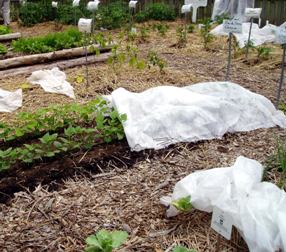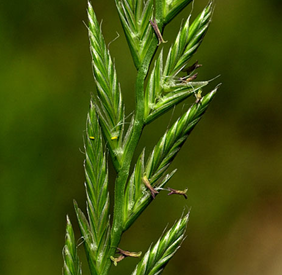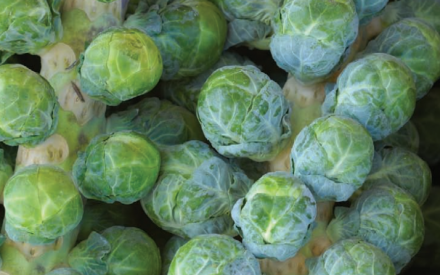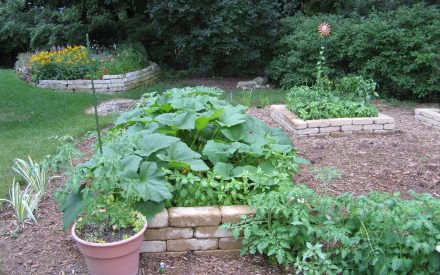
Cold frames and hot beds, hoop houses, cloches, and floating row covers allow gardeners to grow plants earlier in spring and later in fall. Although these structures are used primarily for growing vegetables, they may be used for growing ornamentals, including flowering plants, as well.
Cold frames
Cold frames are by far the most useful and versatile of the structures that extend the gardening season. They are simple, easy-to-make structures that can be used year-round to provide warmth from the sun, and prevent water loss and damage from the wind. Many gardeners use cold frames to harden off transplants in the spring. In addition, cold frames are great places to grow salad crops such as lettuce, radishes, and spinach before and after their regular outdoor planting season. In winter, cold frames can be used for forcing bulbs, storing root vegetables (e.g., carrots or parsnips), or propagating trees and shrubs using hardwood cuttings.
Permanent cold frames should be sturdy enough to withstand years of sun and adverse weather. Most are constructed of wood and have a hinged cover. Glass windows make great covers, but are heavy and breakable. Alternative covers made of plexiglass or double-layered clear plastic weigh less and can be more durable. Commercially available cold frames are often built of lighter-weight materials and are often portable, allowing for movement of the frame to different sun exposures as seasons and plants change. Portable frames can also be set on concrete blocks or bricks to add height for taller plants.
Cold frame lids should be hinged so that they can be easily propped open to allow cool air to enter the frame. This can be important on sunny days when temperatures inside cold frames can get extremely hot, causing plants to wilt. Some mail order catalogs offer temperature controlled cold frame hinges that automatically open and close to vent the frame.
Hot beds
Cold frames become hot beds when heating of some kind is added to the ground under a cold frame. The modern, high-tech version of a hot bed involves burying a waterproof, thermostatically-controlled heating cable in a layer of sand two inches beneath where plants will grow. The bottom heat of hot beds encourages root growth in the plants. An older, low-tech method of creating hot beds has been to place fresh manure in the bottom of a cold frame, with decomposition of the manure providing the heat. This technique is not recommended due to potential safety issues surrounding the use of fresh manure, particularly for food crops.
A hot bed is ideal for starting vegetable and flower seeds in sunlight rather than under artificial light. Many seedlings require constant warm soil temperatures to germinate, exactly the sort of environment that a hot bed can provide.
Hoop houses
Hoop houses are similar to cold frames, only larger. Metal or plastic pipes are bent into a series of hoops that are stuck into the ground or attached to raised beds. The hoops are covered with four to six millimeter polyethylene that is buried in the soil at the base of the hoops. Hoop houses can extend the growing season by an additional six to eight weeks. Like cold frames, hoop houses must be ventilated on warm days. To ventilate a hoop house, simply lift the plastic on the ends of the house, or make openings in the plastic at the top or sides of the house.
Cloches and hot caps
Frequently used for tomatoes and peppers, cloches and hot caps add three to four weeks to the spring growing season. There are many variations on cloches, but generally they are any transparent (not opaque) structure that covers a single plant (e.g., a water wall or a clear juice jug with the bottom cut out). Hot caps tend to be conical in shape. Like cold frames and hoop houses, cloches and hot caps should be ventilated to allow hot air to escape on sunny days.
Floating row covers
Floating row covers are made of spun polyester or polypropylene and look like fabric. They are laid over plants and are permeable to light, water, and air. Floating row covers have many uses in the garden. Row covers keep covered plants five to ten degrees warmer than uncovered plants and provide frost protection to temperatures as low as 28°F. They also protect tender plants from wind and rain damage. In addition, row covers are excellent insect barriers.
Barb Larson
Revised: 6/6/2009
Item number: XHT1158
Download Article






 Using Crop Rotation in Home Vegetable Garden
Using Crop Rotation in Home Vegetable Garden Using Cover Crops and Green Manures in the Home Vegetable Garden
Using Cover Crops and Green Manures in the Home Vegetable Garden Fall Vegetables
Fall Vegetables Vegetable Varieties for Containers
Vegetable Varieties for Containers


